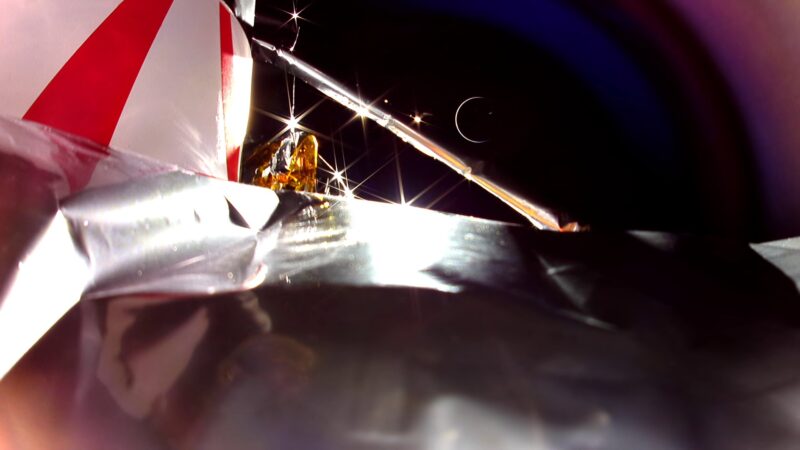
The first private lunar lander built by an American company is no more. Following a ten-day mission which encompassed what Astrobotic CEO John Thornton described as “the highest of highs and the lowest of lows,” the company’s Peregrine lander burned up in Earth’s atmosphere on January 18th. Astrobotic and its primary customer, NASA, aimed to land the spacecraft near the Gruithuisen Domes, a group of fascinating lunar volcanic features. Alas, the mission quickly deviated from this plan. Peregrine’s flight was cut short by a propellant leak shortly after launch. The loss of Peregrine is undoubtedly disappointing to Astrobotic and NASA. However, the team was able to recover from the failure, and they demonstrated a significant amount of progress and resilience while operating the spacecraft in orbit. Thornton described the dramatic flight in a press conference one day after Peregrine’s demise [1].
Peregrine Mission One was the first flight of NASA’s Commercial Lunar Payload Services (CLPS) program. The CLPS initiative aims to regularly send scientific experiments to regions of interest on the Moon while incentivizing the creation of a commercial market for lunar landers. Risk is part and parcel of this innovative strategy; former NASA official Thomas Zurbuchen compared the missions to “shots on goal.” Peregrine carried six NASA payloads, including a radiation monitor, a LIDAR sensor, infrared, neutron, and mass spectrometers, and a retroreflector for navigation. The value of Astrobotic’s payload delivery task order was $108 million, while the NASA instruments themselves were worth another $9 million. The 1.4-ton Peregrine was laden with 16 smaller commercial payloads from nine nations: Canada, Germany, Hungary, Japan, Mexico, Seychelles, the United Kingdom, and the United States.
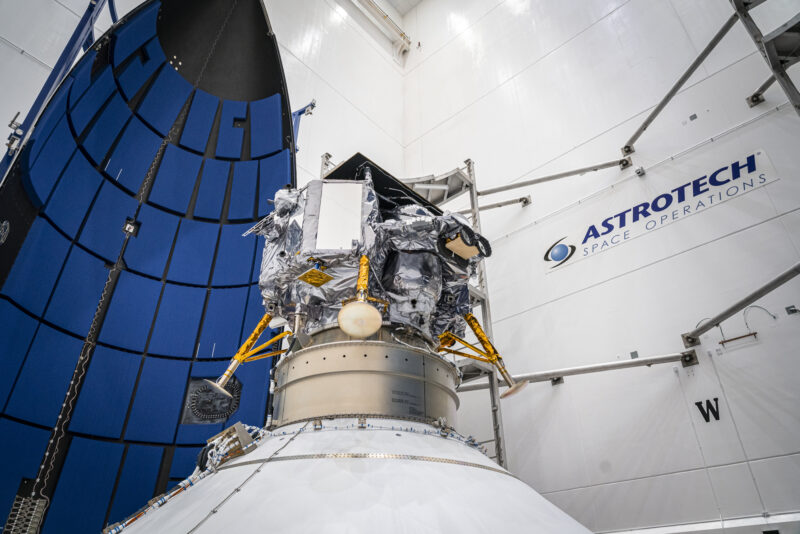
Peregrine began its journey at 2:18 AM on January 8th. The lander was the primary payload on the inaugural flight of the United Launch Alliance (ULA)’s Vulcan rocket. As AmericaSpace’s Ben Evans described, Vulcan performed flawlessly during its debut. Its twin solid rocket boosters burned for nearly two minutes, eventually giving way to Blue Origin’s first pair of BE-4 engines. Two burns from the new Centaur V upper stage placed Peregrine in a highly elliptical Earth orbit. “ULA nailed it,” said Thornton. Under the nominal mission plan, the trajectories of Peregrine and the Moon would have intersected during the spacecraft’s second revolution, at which point the lander would have fired its five main engines to enter lunar orbit. 50 minutes after liftoff, Peregrine separated to begin its cruise to the Moon.
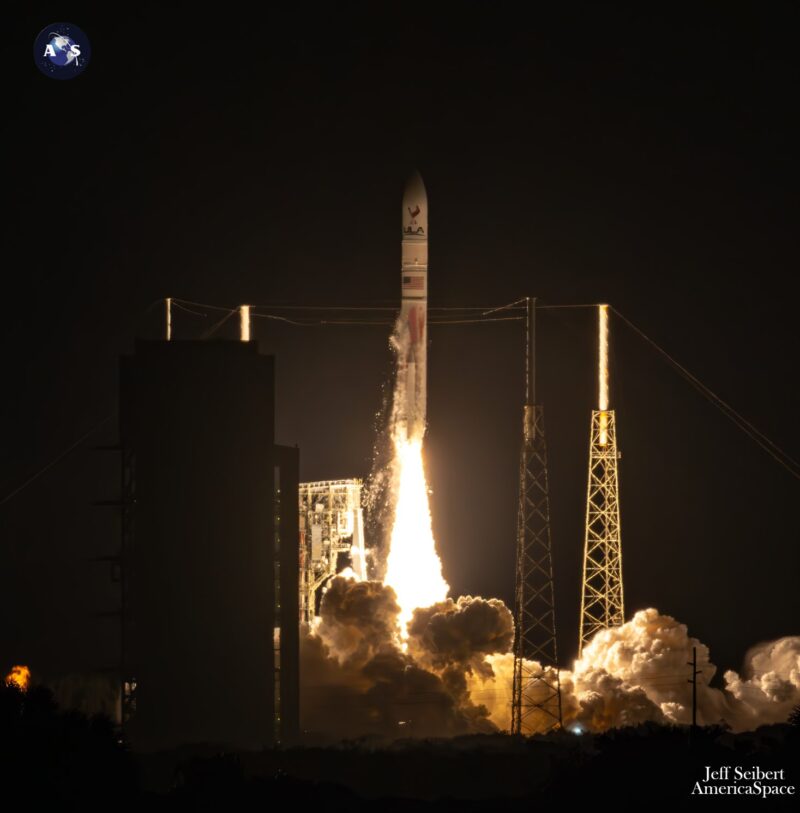
That is when things started to go wrong for Peregrine. Following separation, the solar-powered lander’s most important task was to charge its batteries by rotating its solar array towards the Sun. Two hours after launch, Peregrine attempted to ignite its maneuvering thrusters for the first time. Like many interplanetary spacecraft, the lander featured pressure-fed engines. In these systems, high-pressure helium gas is injected into the propellant tanks, pushing fuel and oxidizer into the combustion chamber. These bursts of helium must be brief, as the helium tanks contain a massive amount of pressurized gas.
Unfortunately, the valve connecting the helium tank to the oxidizer tank opened, but it did not subsequently reseal. Helium rushed into the tank faster than propellant could exit it. Within a minute, the pressure inside the tank exceeded the strength of its shell, and it burst. When a rocket engine ignites, its two propellants are consumed at a constant rate. The loss of oxidizer therefore immediately ended Astrobotic’s aspirations to land Peregrine on the Moon. According to Thornton, “That was certainly a tough moment for all of us.”
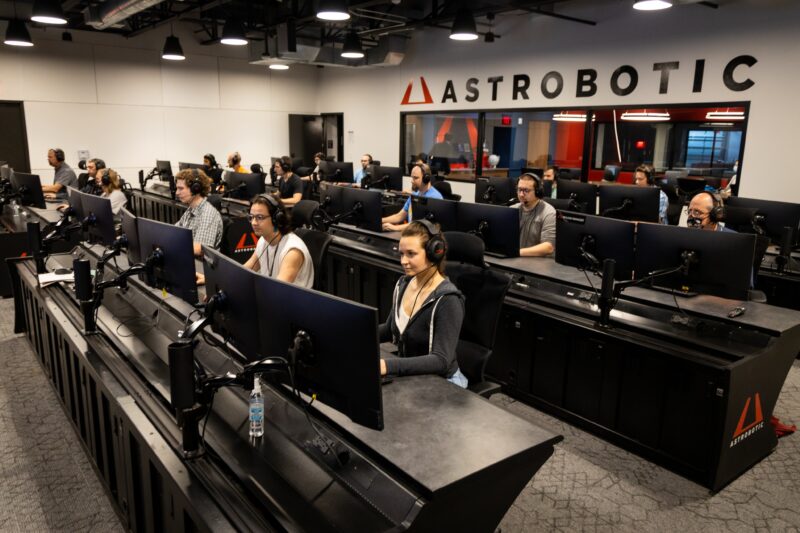
On a more pressing note, the leaking propellant acted as an unanticipated source of thrust. Peregrine began tumbling. This was a potentially lethal anomaly for the solar-powered lander, as it must keep its solar array oriented towards the Sun to generate power. Astrobotic calculated that Peregrine could only operate for six hours on battery power, at which point the spacecraft would cease to function. The Astrobotic mission control team raced to diagnose the problem and implement a solution.
As Peregrine’s time ran short, one as-yet unnamed engineer made a bold and crucial call. Thornton recalled that this team member was not assigned to the first shift, and that he was only present because he wanted to watch the launch from the mission control center. However, he happened to be an expert on the code which controlled Peregrine’s orientation in space. He recommended that the team send a guidance, navigation, and control update to Peregrine which accounted for the thrust provided by the leak.

Four minutes before Peregrine was scheduled to enter a communications blackout, Astrobotic uploaded the new command to the spacecraft. If the company’s solution did not work, Peregrine would likely run out of power while it was out of contact with the Earth. The team waited with bated breath for Peregrine to reestablish contact. It eventually did, confirming that the software update was successful. “It was a big turning point for how the mission unfolded,” said Thornton. “It was pretty remarkable and inspiring. Our mission control team in Pittsburg kept their cool and diagnosed the problem.”
Over the course of the next three days, Astrobotic gradually nursed Peregrine back into partial health. The company initially estimated that the spacecraft would run out of oxidizer within 40 hours, at which point it would no longer be able to maintain its orientation towards the Sun. However, as propellant continued to exit the ruptured tank, the pressure inside it decreased. The propellant loss rate subsided and eventually slowed to a trickle. As a result, Peregrine was able to operate through an entire ten-day orbit. If it had not reentered the atmosphere, it would likely have continued operating beyond that duration.
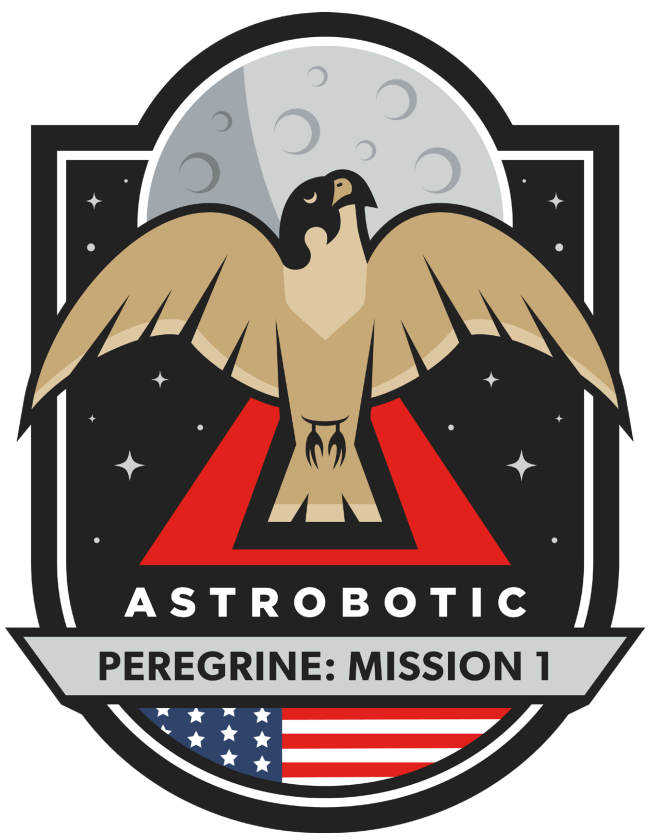
Thornton noted that all of the elements which were designed and built by Astrobotic itself worked as planned. Once Peregrine was out of imminent danger, the mission control team put the lander’s software, avionics, and cameras through their paces. None of these systems contained mission-critical flaws, which is an impressive achievement for a start-up company flying its first mission. Peregrine is a complex machine, yet only a single component failed. The spacecraft’s propulsion system and valves were built by two subcontractors, Dynetics and Frontier Aerospace. Thornton emphasized that it is too early to determine why the valves failed, but one possibility is that the anomaly was related to the supply chain issues which have plagued the entire aerospace industry for the past four years. “The whole mission was always pressured by COVID and the challenges of a firm fixed-price contract, where we had to make difficult choices about what mattered most at any given time,” he said.
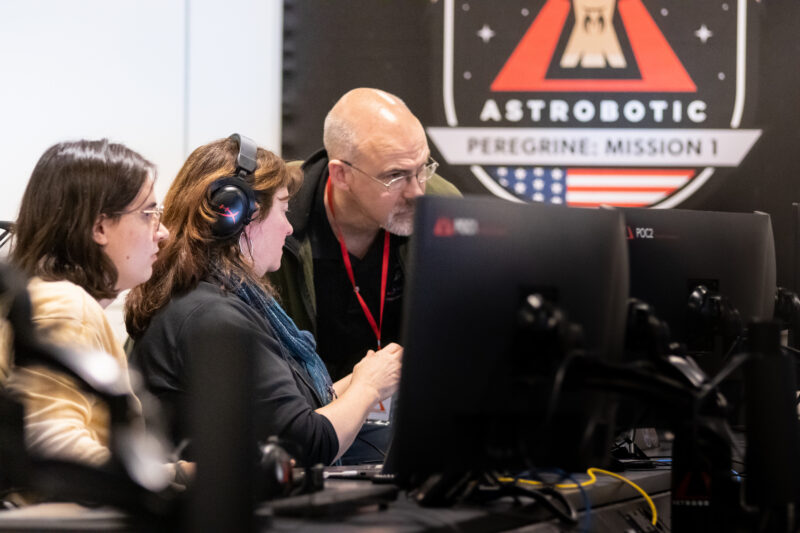
During the remainder of Peregrine’s mission, the priority was collecting scientific data using the spacecraft’s instrument suite. Of Peregrine’s 22 payloads, nine were “active” devices capable of communicating with the lander. The remainder were unpowered time capsules and memorials. All nine of these payloads, including five instruments from NASA, successfully returned data to Earth. Joel Kearns, NASA’s Deputy Associate Administrator for Exploration, oversees the CLPS program. He said, “We believe that (our payloads) could have operated successfully if they had reached the Moon.”
Two of NASA’s instruments, the Linear Energy Transfer Spectrometer (LETS) radiation monitor and the Neutron Spectrometer System (NSS), collected valuable data on the radiation flux beyond Earth’s protective magnetosphere. Another radiation sensor was provided by the German Aerospace Center (DLR). DLR’s M-42 instrument collected 92 hours of data during Peregrine Mission One. The measurements from all three of these payloads can be compiled with data from other spacecraft, including the Artemis 1 Orion, to improve our understanding of cosmic and solar radiation. This is a vital prerequisite for the upcoming crewed Artemis missions to the Moon.
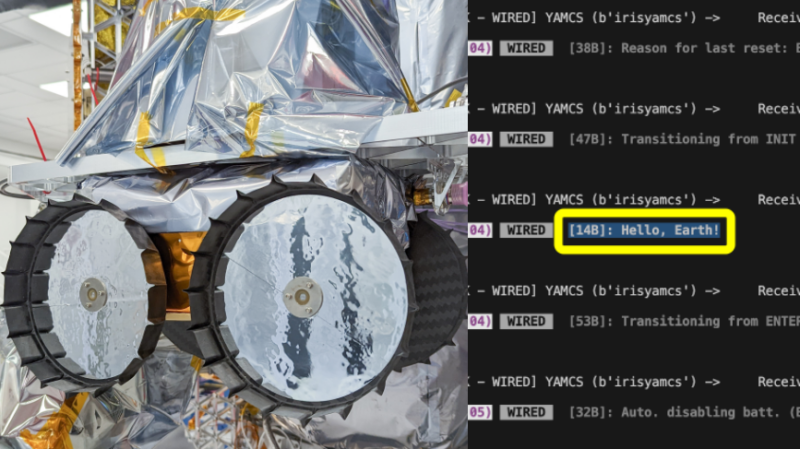
While Carnegie Melon University’s diminutive Iris rover lost its opportunity to roam across the lunar surface, its designers were able to test its mobility system. They rotated and steered its wheels, proving that it is capable of driving on the Moon. In a bittersweet moment, the rover used its four wheels to wave “goodbye” to one of Peregrine’s cameras shortly before the spacecraft entered Earth’s atmosphere. Likewise, the Mexican Space Agency’s five Colmena robots were activated successfully. Despite the fact that Colmena never reached the Moon, the mission became a source of pride for the nation which built it. “(In Mexico), it was front-page news, above the fold,” said Thornton. They were talking about how Mexico had the first instrument in cislunar space from Latin America.”

Despite these silver linings, Peregrine’s mission came to its conclusion after ten days of flight. Vulcan placed the lander into a stable orbit, but the propellant leak altered its trajectory. As a result, the spacecraft was on course to reenter Earth’s atmosphere after one orbit. Astrobotic considered firing the main propulsion system to avoid atmospheric entry and either fly by or impact the Moon. If enough propellant was available, it could potentially have entered Earth orbit.
After analyzing the situation, NASA concluded that the most responsible course of action was to let Peregrine reentered as planned. Astrobotic agreed and made the difficult decision to consign their spacecraft to a fiery end. It was certainly tempting to send Peregrine to the Moon. However, if it entered lunar orbit or continued moving through cislunar space, the lander would eventually have shut down. At that point, it would have become a hazard to other spacecraft, including the Artemis missions. If it had impacted the Moon, it would have contaminated its landing site and violated the religious beliefs of the Navajo people, who did not want the human cremains in the Celestis memorial payload to be scattered across the lunar surface.
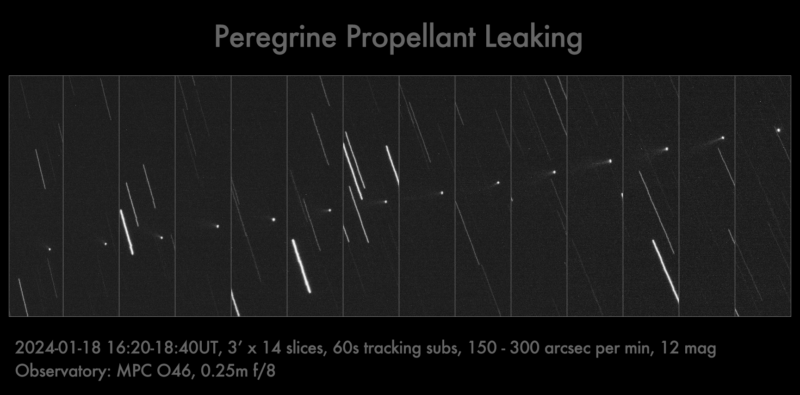
Shortly before Peregrine’s demise, the spacecraft captured one last image of the crescent Earth. Thornton says that it was his favorite moment of the mission. “When I came into mission control, we were in the closing hours of contact with Peregrine. The night before, we had talked about trying to get one last picture as we came towards Earth, and an amazing thing happened. We knew that the Sun and the Earth were in the same part of the sky. If you have ever tried to take a picture of the Sun, you know that it is really, really hard. Sure enough, the first time we took that picture, we got a bad view. Our engineers – I still don’t know how they managed to do this – put the Sun behind one of the very small struts that supports our payload deck. It’s the equivalent of sticking one finger out in the sky and blocking the Sun. To me, that was an emotional moment, because that represented the best of Astrobotic.
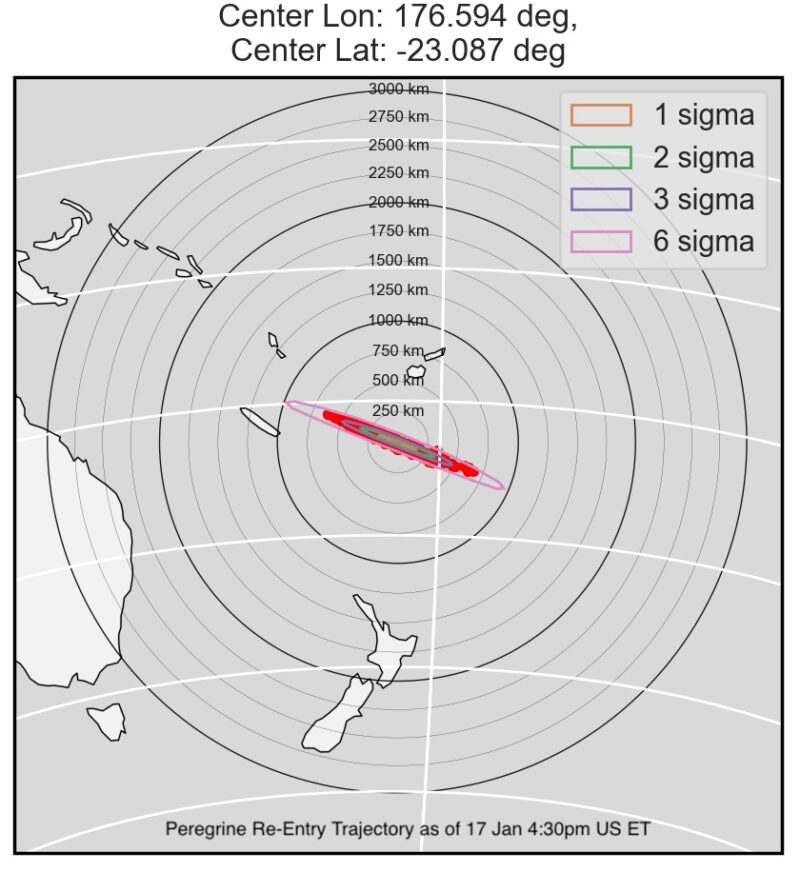
Peregrine returned to Earth at 3:59 PM on January 18th. A short burn of the main engines ensured that it reentered off the east coast of Australia and over the uninhabited Pacific Ocean. One day later, Astrobotic and NASA confirmed that the spacecraft was destroyed.
Objectively, Peregrine Mission One was a failure. It did not reach the lunar surface, nor did it test its systems during a landing attempt. However, Astrobotic has many achievements which it can celebrate. The company’s engineers were able to salvage their spacecraft from a seemingly crippling propellant leak. They subsequently powered up Peregrine’s payloads and returned data to their customers. Astrobotic also set excellent precedents for maintaining transparency with the public during and mission and for responsibly disposing of their lander. The mission control team exemplified composure under pressure and ingenuity. Apollo Flight Director Gene Kranz would likely be proud of the “tough and competent” approach to solving unanticipated problems. For NASA’s part, the agency was able to collect valuable radiation data and learn lessons which will benefit future missions. Four of NASA’s instruments will get a second chance to reach the Moon on future CLPS landers, eight of which are already schedule for flight.
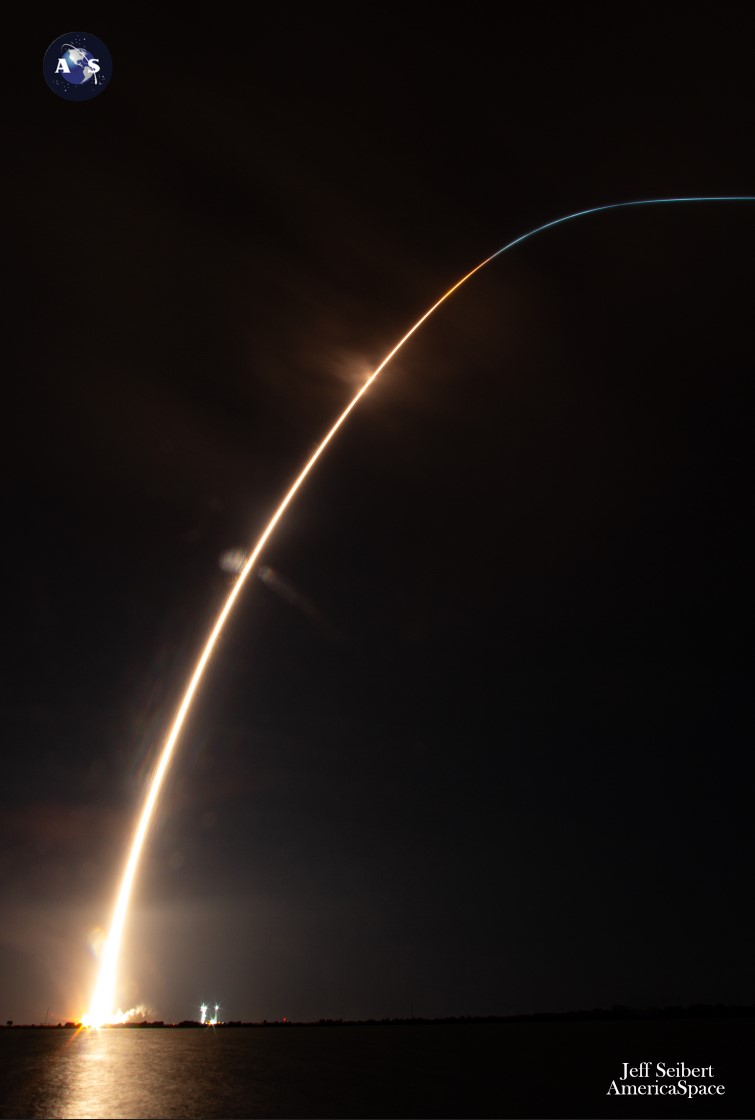
The CLPS program will take its next “shot on goal” as early as February 10th. Intuitive Machines’ IM-1 mission will attempt to send five NASA payloads to the rugged highlands near the Moon’s south pole. Meanwhile, Astrobotic will assemble an Anomaly Review Board to identify the definitive cause of Peregrine’s failure. Thornton pledges to share any lessons learned with the rest of the aerospace agency. He says, “We really view this as the challenge of humanity against the stars.” The company will then turn its eyes toward its next mission. Astrobotic’s larger Griffin lander will deliver NASA’s $660 million VIPER rover to the south pole, where it will prospect for lunar ice.
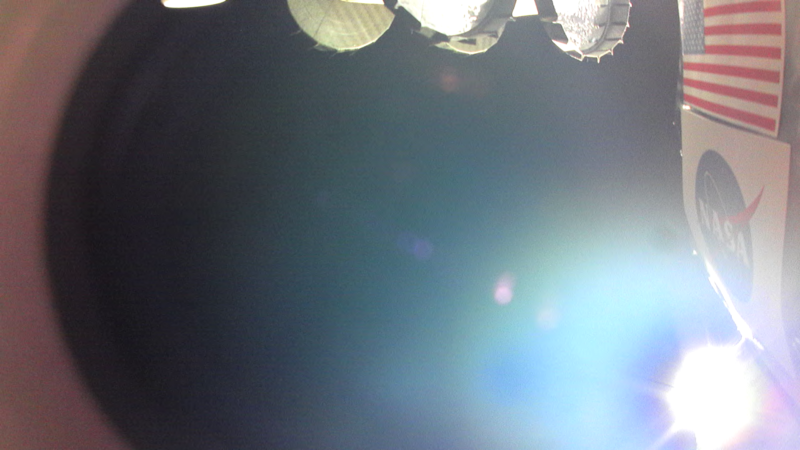
VIPER is NASA highest-profile CLPS mission, but Thornton is confident that the lessons learned from Peregrine will allow Griffin to succeed. “Our goal as a company is to make space accessible to the world. And although this mission did not turn out as we had planned, I am excited and proud of the fact that the world followed us, they were with us, and they experienced the thrill of spaceflight – as well as the sorrow and the challenges that go with that.”




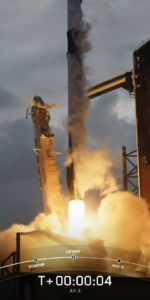

5 Comments
Leave a Reply5 Pings & Trackbacks
Pingback:Life-Leading Falcon 9 Readies for Tomorrow’s IM-1 Lunar Launch - AmericaSpace
Pingback:Life-Leading Falcon 9 Readies for Tomorrow’s IM-1 Lunar Launch - SPACERFIT
Pingback:IM-1 Makes History by Igniting Cryogenic Engine in Deep Space - SPACERFIT
Pingback:IM-1 Makes History by Igniting Cryogenic Engine in Deep Space - AmericaSpace
Pingback:Halfway to the Moon, IM-1 Sets its Sights on Malapert A - SPACERFIT